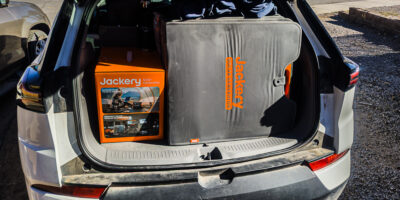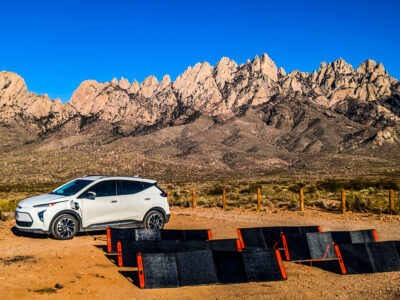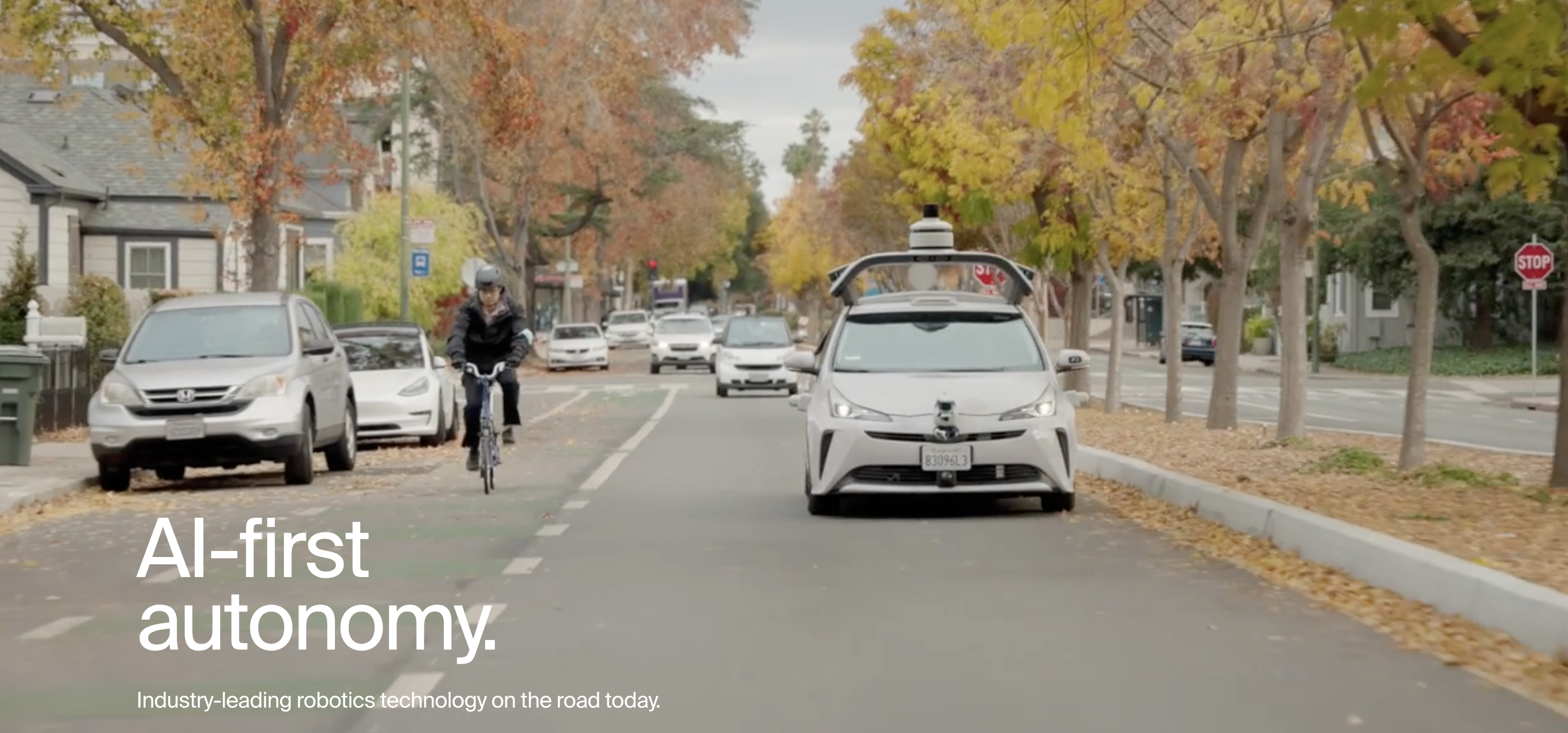Sign up for daily news updates from CleanTechnica on email. Or follow us on Google News!
I recently came across a video on YouTube that showed me the serious progress that electric overlanding and camping gear has made in the last few years. As a clean tech fanatic who gets a lot of review items from manufacturers, I figured out early on where this was going, but I’ve kept myself grounded by regularly talking to family and friends who are more mainstream. The unavoidable truth has continued to be the dominance of camping gases like propane, butane, and even old-school “white gas.”
Cost has been the biggest factor historically. Solar panels have come down a lot in price, as have battery cells, but even a modest solar generator system that can only charge flashlights and phones can still cost hundreds of dollars for a quality unit. When people are only camping for a hobby and have other things in their life competing for the cash, it’s often cheaper to just pick up a gas lantern and a gas stove so you can get out there and camp instead of continuing to save or going into debt for a hobby.
Another factor is size and weight. The energy available in a propane or butane cylinder can’t be replaced by a battery of the same size and weight. To accomplish the same cooking or heating task, you need a fairly beefy power station and either solar or an alternator charging setup (assuming an ICE overlanding vehicle, which is the norm) that can charge that bigger power station up in a reasonable amount of time. That’s big, bulky, heavy, and in the case of solar, difficult to get set up when you get to camp.
For example, my 1200-watt solar and battery setup is good enough to even charge my EV, but it takes up the whole back of the Bolt, leaving no cargo space for anything else whatsoever. It also takes 10-15 minutes and some manual labor to set it all up. Compared to screwing a small propane cylinder onto a stove, the difference is night and day.
The obvious alternative is to just use an EV’s battery to provide the power, and that’s what I’ve been doing lately. I keep the solar panels in my trailer for multi-day stays at a campsite when it makes sense to deploy the solar array, but most of the time my campsite is powered by Electrify America.
Watching The Drawbacks Disappear
But, as I said in the beginning of the article, a recent video shows us that the wall keeping campers and overlanders from going all electric (at least for everything but the vehicle) is crumbling.
As the video shows, there are some serious advantages to going electric over propane, despite the cost and bulk downsides.
First off, you don’t need to plan ahead to have gas in a cylinder of whatever size. With propane, it’s pretty easy to overestimate how much gas is left in a little lantern cylinder or even a bigger one measured in gallons. You can pretty easily get out in the boondocks and find out to your horror halfway through cooking a great camping meal that you had less than you thought, and be hours away from the store. With a battery, you can have it charging from the car the whole way there or set up panels to get more power anywhere.
Second, it’s easier to clean up. In the video, the ease of cleaning an inductive cooktop is a big plus. In my own experience, I’ve seen that it’s a lot easier to clean up after using a microwave or toaster oven than it is to clean up after using a gas stove. Electric gives you options for your cooking that can mean little to no cleanup, while gas means you’re always dirtying a pot or pan to eat and then needing to wash it without a kitchen.
Third, the dangers of fire and gas just aren’t there. Suffocation is a real concern in enclosed spaces like a tent or camper, especially for heating. It’s also possible for a gas cooking or heating setup to literally go up in flames and destroy your vehicle or kill you. This isn’t common, but it does happen on occasion through worn out gear, negligence, or the dumb things kids sometimes do.
Another huge benefit to electric camp cooking is versatility. Instead of being stuck with only using flames, you can do microwaves (something that goes great with a small freezer or leftovers), toaster ovens, crock pots, waffle irons, sandwich grillers, mixers, and basically anything you can use at home. For heating, you have the option of using a small space heater, electric heating pads/blankets, and (assuming you have enough battery for it) a heat pump.
No Technical Skills Required Now
It used to be that a big battery setup required knowledge of low voltage wiring, Ohm’s law, and electrical safety. But, power stations have proliferated. Jackery, EcoFlow, and a host of other companies are now in the market selling all-in-one battery storage and inverter kits. These are cheaper than ever to buy, and only keep getting cheaper. No skill is required at all to put these in your vehicle and use them unless you want to charge them faster. Even then, EcoFlow has come out with an alternator charger system (works with EVs, too) that solves that last hurdle.
There may be situations, like a custom RV rig or a truly enormous battery capacity setup, where you still have to build your own electrical system, but for most people, a power station is the way to go.
Electric trucks will mostly finish off camping gas, though. Everything from the F-150 Lightning to the Rivian to the Cybertruck has some form of onboard power to draw it directly from the big battery pack. In these trucks, there’s no additional gear to buy, no skill needed, and nothing else to do other than plug in. The price of electric trucks is still high and the charging network needs to improve a lot to serve all overland needs, but once we get to cheaper trucks that can charge all over the place, they’ll start replacing overland vehicles everywhere.
At that point, it’s a no-brainer. Why would anyone pack along dangerous gas cylinders when the truck already has a plug?
Have a tip for CleanTechnica? Want to advertise? Want to suggest a guest for our CleanTech Talk podcast? Contact us here.
Latest CleanTechnica.TV Videos
CleanTechnica uses affiliate links. See our policy here.
CleanTechnica’s Comment Policy







